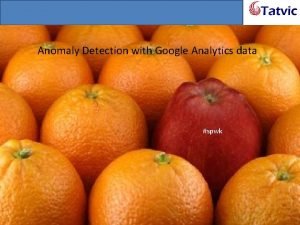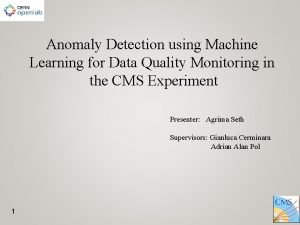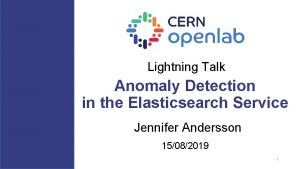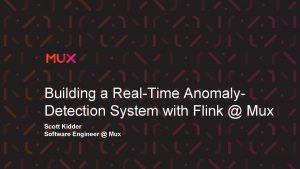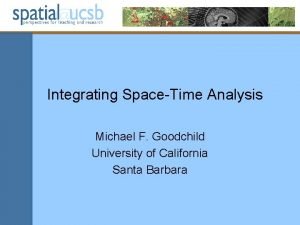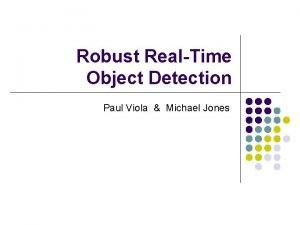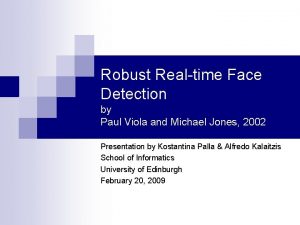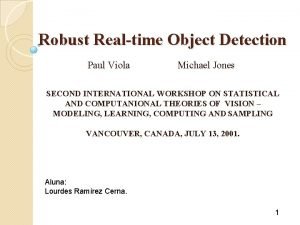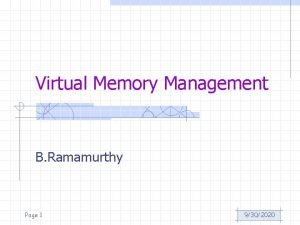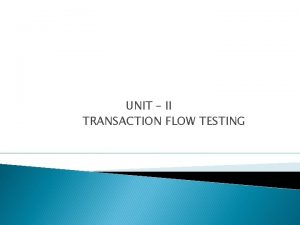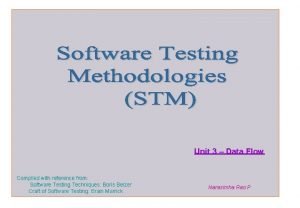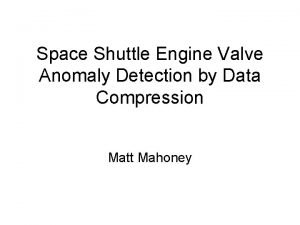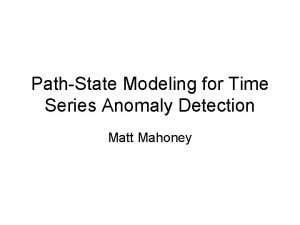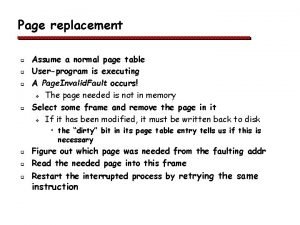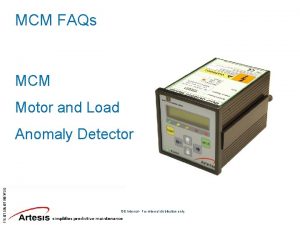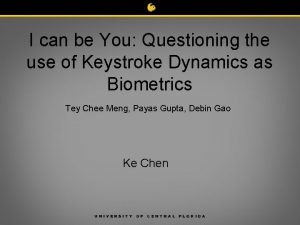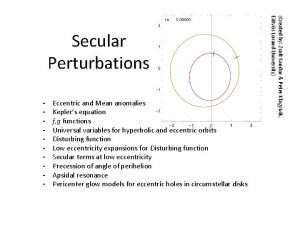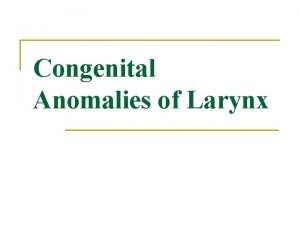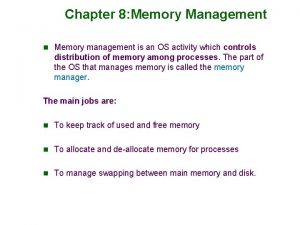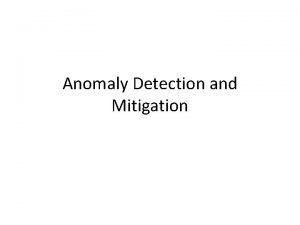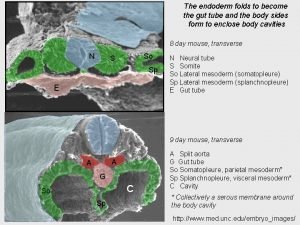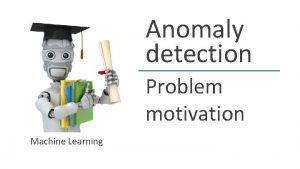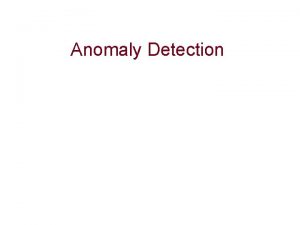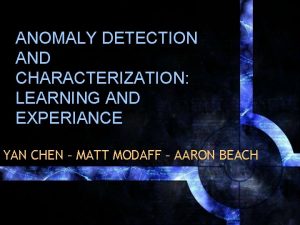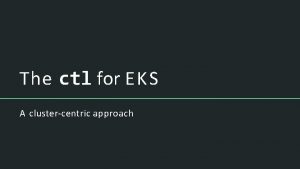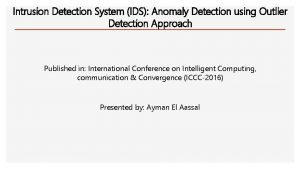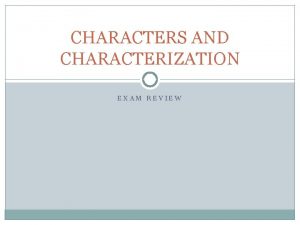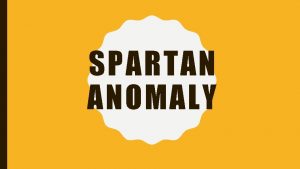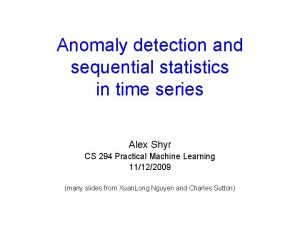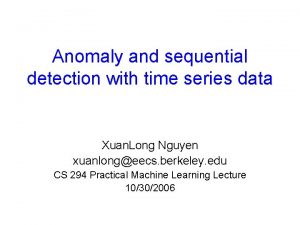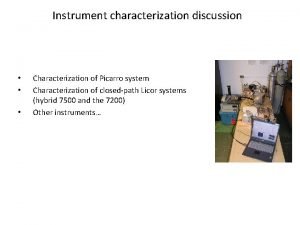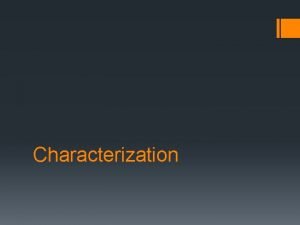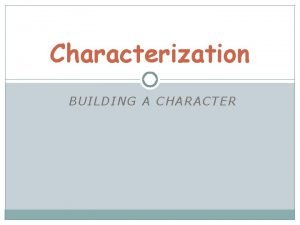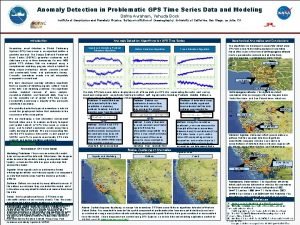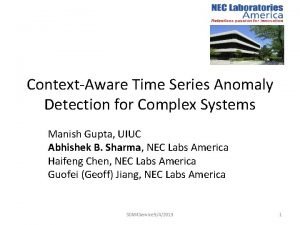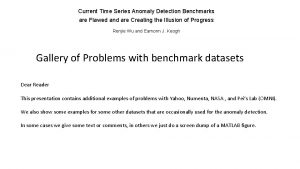ClusterCentric Anomaly Detection and Characterization in Spatial Time





























- Slides: 29

Cluster-Centric Anomaly Detection and Characterization in Spatial Time Series Dr. Hesam Izakian October 2014

Outline Spatial time series Problem formulation Anomaly detection in spatial time seriesquestions Overall scheme of the proposed method o Time series segmentation o Spatial time series clustering o Assigning anomaly scores to clusters o Visualizing the propagation of anomalies An outbreak detection scenario Application 2

Spatial time series Structure of data o A set of spatial coordinates o One or more time series for each point Examples o Daily average temperature in different climate stations o Stock market indexes in different countries o Number of absent students in different schools o Number emergency department visits in different hospitals o Measured signals in different parts of brain 3

Problem formulation There are N spatial time series Objective: Find a spatial neighborhood of data In a time interval Containing a high level of unexpected changes 4

Anomaly detection in spatial time series- questions Spatial neighborhood of data o Size of neighborhood o Overlapping neighborhoods Unexpected changes (anomalies) o What kind of changes are expected/not expected o How to evaluate the level of unexpected changes Anomaly visualization Anomaly characterization o What was the source of anomaly o How the anomaly is propagated over time 5

Overall scheme of the proposed method Revealing the structure of data in various time intervals Comparing the revealed structures Spatial time series data Spatial time series clustering Sliding window Anomaly scores Fuzzy relations 6

Time series part segmentation Sliding window o Spatio-temporal subsequences o Local view of time series part 7

Overall scheme of the proposed method Revealing the structure of data in various time intervals Comparing the revealed structures Spatial time series data Spatial time series clustering Sliding window Anomaly scores Fuzzy relations 8

Fuzzy C-Means clustering- visual illustration 9

Fuzzy C-Means clustering- visual illustration 10

Fuzzy C-Means clustering… Partitions N data Into clusters Result: Objective function: Minimization: 11

Spatial time series clustering Reveals available structure within data o In form of partition matrices Challenges o Different sources: Spatial part vs. temporal part o Different dimensionality in each part o Different structure within each part 12

Spatial time series clustering… In spatial time series, we define Adopted FCM objective function Characteristics o When λ=0: Only spatial part of data in clustering o A higher value of λ : a higher impact of time series part in clustering o Optimal value of λ: Optimal impact of each part in clustering 13

Spatial-time series clustering. Optimal value of λ 14

Overall scheme of the proposed method Revealing the structure of data in various time intervals Comparing the revealed structures Spatial time series data Spatial time series clustering Sliding window Anomaly scores Fuzzy relations 15

Assigning anomaly scores to clusters in different time windows Assign an anomaly score to each single subsequence based on historical data Aggregating anomaly scores inside revealed clusters 16

Overall scheme of the proposed method Revealing the structure of data in various time intervals Comparing the revealed structures Spatial time series data Spatial time series clustering Sliding window Anomaly scores Fuzzy relations 17

Visualizing the propagation of anomalies- Fuzzy relations Objective: quantifying relations between clusters 18

Visualizing the propagation of anomalies… Objective function to construct relation Optimization 19

Example An outbreak o In southern part of Alberta o Using NAADSM for 100 days 20

Example… A sliding window is used o Length : 20 o Movement: 10 Generated spatio-temporal subsequences: 21

22

Example… 23

Example… 24

Example… 25

Example… 26

Application Implemented for Agriculture and Rural Development (Government of Alberta) Using KNIME (Konstanz Information Miner) Animal health surveillance in Alberta Anomaly detection Data visualization 27

Conclusions A framework for anomaly detection and characterization in spatial time series is developed A sliding window to generate a set of spatio-temporal subsequences is considered Clustering is used to discover the available structure within the spatio-temporal subsequences An anomaly score assigned to each revealed spatiotemporal cluster A fuzzy relation technique is proposed to quantify the relations between clusters in successive time steps 28

Thank you 29
 Google analytics anomaly detection
Google analytics anomaly detection Anomaly detection spark
Anomaly detection spark Agrima seth
Agrima seth Elasticsearch anomaly detection
Elasticsearch anomaly detection Flink anomaly detection
Flink anomaly detection System log analysis for anomaly detection
System log analysis for anomaly detection Oflinemaps
Oflinemaps Indirect direct characterization
Indirect direct characterization What is direct and indirect characterization
What is direct and indirect characterization Start time end time and elapsed time
Start time end time and elapsed time Spatial time
Spatial time Robust real-time object detection
Robust real-time object detection Robust real-time face detection
Robust real-time face detection Robust real-time object detection
Robust real-time object detection Virtual memory management techniques
Virtual memory management techniques Data flow anomaly state graph
Data flow anomaly state graph Application of data flow testing
Application of data flow testing Anomaly score
Anomaly score Anomaly score
Anomaly score Belady's anomaly example
Belady's anomaly example Anomaly mcm
Anomaly mcm Page replacement fifo
Page replacement fifo Anomaly score
Anomaly score True anomaly calculator
True anomaly calculator Carl allen md
Carl allen md Larynx
Larynx Belady's anomaly example
Belady's anomaly example Cisco anomaly detector
Cisco anomaly detector Durupinar site
Durupinar site Vascular ring anomaly
Vascular ring anomaly
